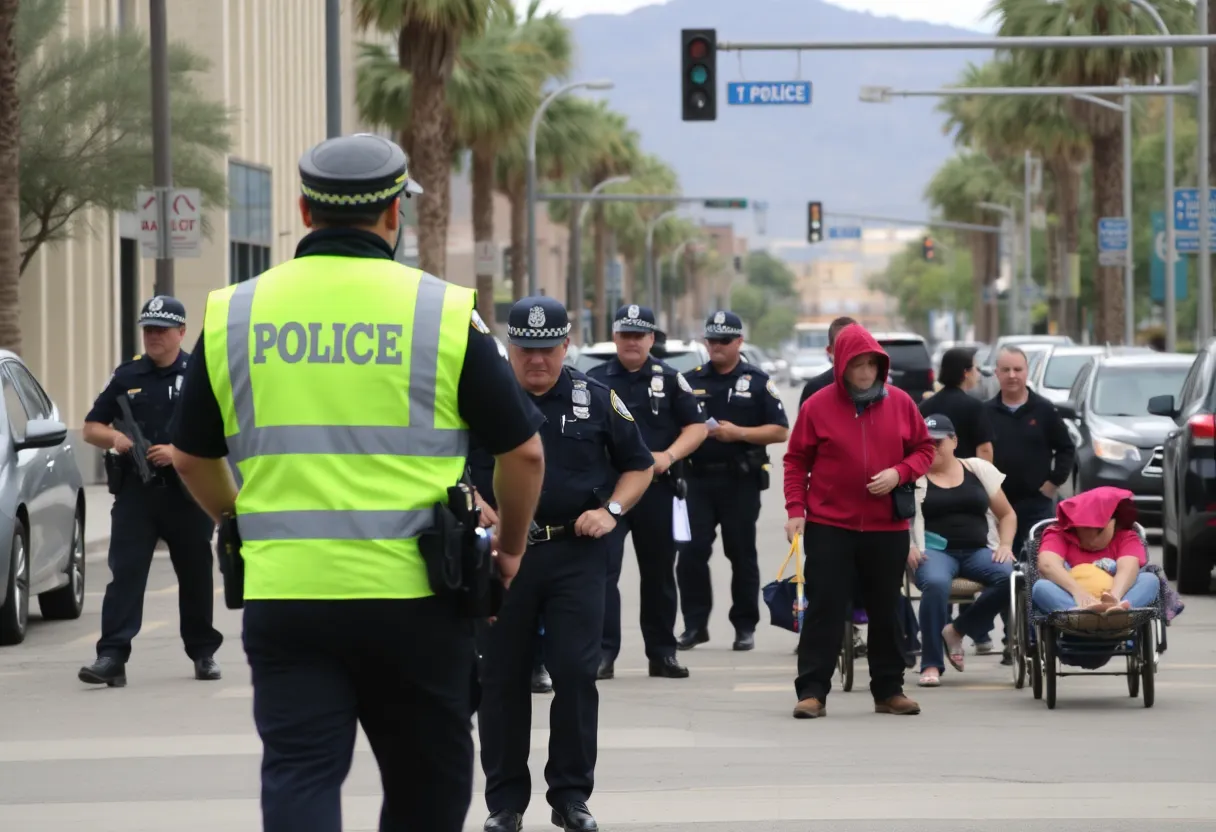Tucson, October 19, 2025
Tucson city officials have launched an initiative to combat crimes linked to homelessness, including increased police patrols and new ordinances targeting public nuisances. Mayor Regina Romero stresses the importance of balancing enforcement with support services, allocating $2 million for enhanced shelter capacity and outreach programs. While some community members support the measures, advocates express concerns over the potential criminalization of poverty. The city’s strategy will evaluate its effectiveness through community feedback and crime data analysis in the coming months.
Tucson Cracks Down on Homelessness-Related Crimes with New Patrols and Ordinances
Tucson city officials announced a major initiative on Saturday to tackle crimes linked to homelessness, deploying additional police patrols in high-impact areas and introducing new ordinances aimed at reducing public nuisances. This move comes amid growing concerns over rising thefts and unauthorized encampments across the city, with authorities emphasizing a combined approach of enforcement and support services.
The announcement highlights the city’s effort to address public safety while navigating the complex realities of homelessness. Mayor Regina Romero underscored the need to balance strict measures with expanded assistance programs, ensuring that responses do not solely rely on criminalization. The immediate rollout includes increased foot and vehicle patrols in zones where such issues are most prevalent, such as downtown districts and public parks, to deter activities like theft, vandalism, and the establishment of temporary shelters in unauthorized locations.
Under the new ordinances, specific behaviors classified as public nuisances—such as blocking sidewalks, open drug use, or improper waste disposal in encampments—will face stricter penalties. These rules build on existing laws but introduce clearer definitions and faster enforcement mechanisms to clear backlogged cases. Officials plan to prioritize education and warnings before issuing fines or arrests, particularly for first-time offenses, to encourage compliance without immediate escalation.
Supporting Services to Complement Enforcement
To offset the enforcement focus, the city has allocated $2 million toward enhancing shelter capacities and outreach programs. This funding will support the expansion of temporary housing options, mobile hygiene units, and mental health services, aiming to connect individuals experiencing homelessness with long-term resources. Partnerships with local nonprofits will facilitate on-site assistance in patrol areas, where social workers can provide information on available beds, job training, and addiction recovery support.
City leaders report that theft incidents have surged by over 20 percent in the past year in areas with high concentrations of unhoused residents, prompting this multifaceted strategy. Encampments have also proliferated in underpasses and green spaces, leading to complaints from nearby businesses and residents about safety and cleanliness. By targeting these hotspots, officials hope to restore order while directing people toward stable alternatives rather than punitive outcomes alone.
Advocates’ Concerns Over Potential Criminalization
While the initiative has garnered support from those affected by rising crime, homelessness advocates have raised alarms about the risk of criminalizing poverty. They argue that new ordinances could disproportionately impact vulnerable populations, pushing them further into cycles of incarceration without addressing root causes like affordable housing shortages and economic inequality. Critics point to similar policies in other cities that have led to increased jail populations among the unhoused, straining public resources without resolving underlying issues.
These groups call for a greater emphasis on preventive measures, such as increased funding for affordable housing projects and employment programs tailored to those without stable addresses. They worry that without robust implementation of support services, the crackdown might exacerbate tensions between law enforcement and the homeless community, potentially leading to more confrontations on the streets.
Background on Tucson’s Homelessness Challenges
Tucson’s homelessness crisis has intensified in recent years, driven by factors including high rental costs, limited job opportunities in certain sectors, and the aftermath of economic disruptions. Local counts show a steady rise in the unhoused population, with thousands relying on a patchwork of shelters and street living each night. Previous efforts, like expanded winter warming centers and eviction prevention grants, have provided some relief but fallen short of demand.
The current strategy reflects broader national conversations about urban homelessness, where cities grapple with balancing public order and compassion. In Tucson, this includes ongoing collaborations with federal programs for disaster relief housing and state initiatives for behavioral health support. Officials maintain that the $2 million investment signals a commitment to holistic solutions, with plans to evaluate the program’s effectiveness after six months through community feedback and crime data analysis.
As patrols begin this week, residents and stakeholders will watch closely to see how the balance between enforcement and aid plays out. The goal remains clear: safer streets for all, achieved through targeted action and inclusive support, amid a challenge that affects every corner of the community.
FAQ
- What did Tucson city officials announce on Saturday?
- Tucson city officials announced a major initiative to tackle crimes linked to homelessness, deploying additional police patrols in high-impact areas and introducing new ordinances aimed at reducing public nuisances.
- What is the focus of the new patrols?
- The immediate rollout includes increased foot and vehicle patrols in zones where such issues are most prevalent, such as downtown districts and public parks, to deter activities like theft, vandalism, and the establishment of temporary shelters in unauthorized locations.
- What do the new ordinances target?
- Under the new ordinances, specific behaviors classified as public nuisances—such as blocking sidewalks, open drug use, or improper waste disposal in encampments—will face stricter penalties.
- How much funding is allocated for support services?
- The city has allocated $2 million toward enhancing shelter capacities and outreach programs.
- What concerns have advocates raised?
- Homelessness advocates have raised alarms about the risk of criminalizing poverty, arguing that new ordinances could disproportionately impact vulnerable populations.
- What factors are driving Tucson’s homelessness crisis?
- Tucson’s homelessness crisis has intensified in recent years, driven by factors including high rental costs, limited job opportunities in certain sectors, and the aftermath of economic disruptions.
Key Features of Tucson’s Homelessness Crackdown Initiative
| Feature | Description |
|---|---|
| Increased Patrols | Deployment of more police in high-impact areas like downtown and parks to deter theft, vandalism, and unauthorized encampments. |
| New Ordinances | Stricter rules on public nuisances including blocking sidewalks, open drug use, and improper waste disposal with education and warnings first. |
| Funding for Support | $2 million allocated for shelters, outreach, mobile hygiene units, and mental health services. |
| Advocates’ Concerns | Worries about criminalizing poverty and disproportionate impact on vulnerable populations. |
| Evaluation Plan | Program effectiveness to be assessed after six months using community feedback and crime data. |
Deeper Dive: News & Info About This Topic
HERE Resources
Tucson Community Rallies for Public Transit Reform
Local Lawmakers Introduce Safe City Initiative in Tucson
Tucson Launches Safe City Initiative to Address Crime




